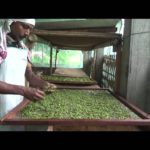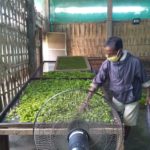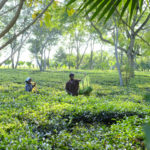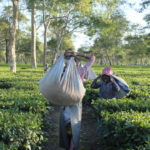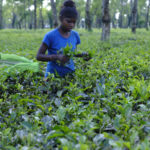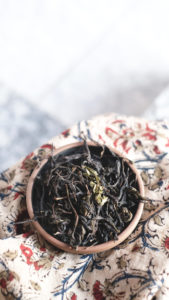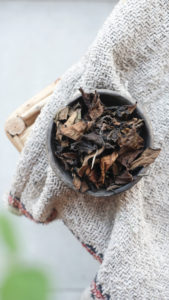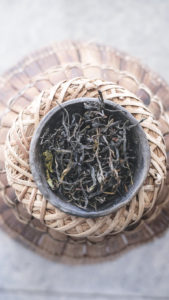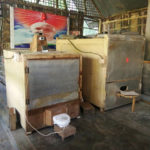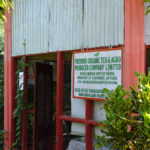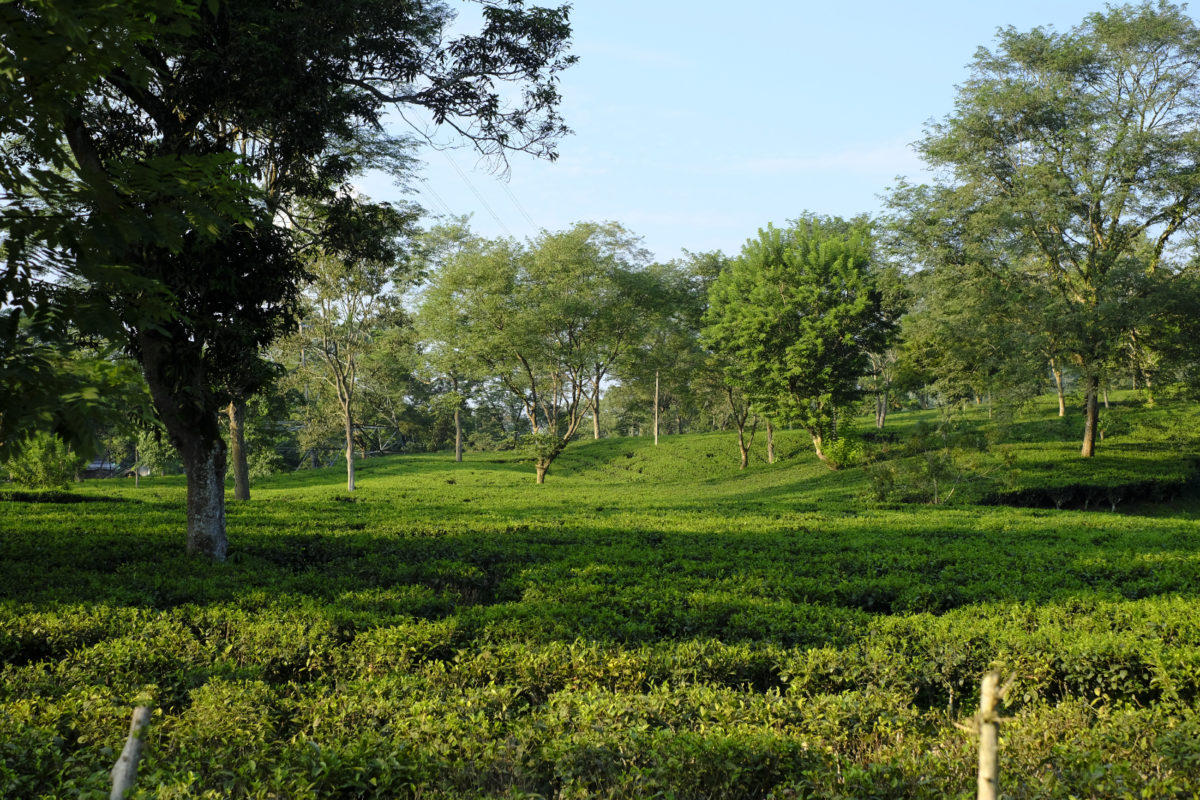
A Local Tea Movement Brewing in Assam
Sustainability Steeped in Each Leaf
By Anesce Dremen
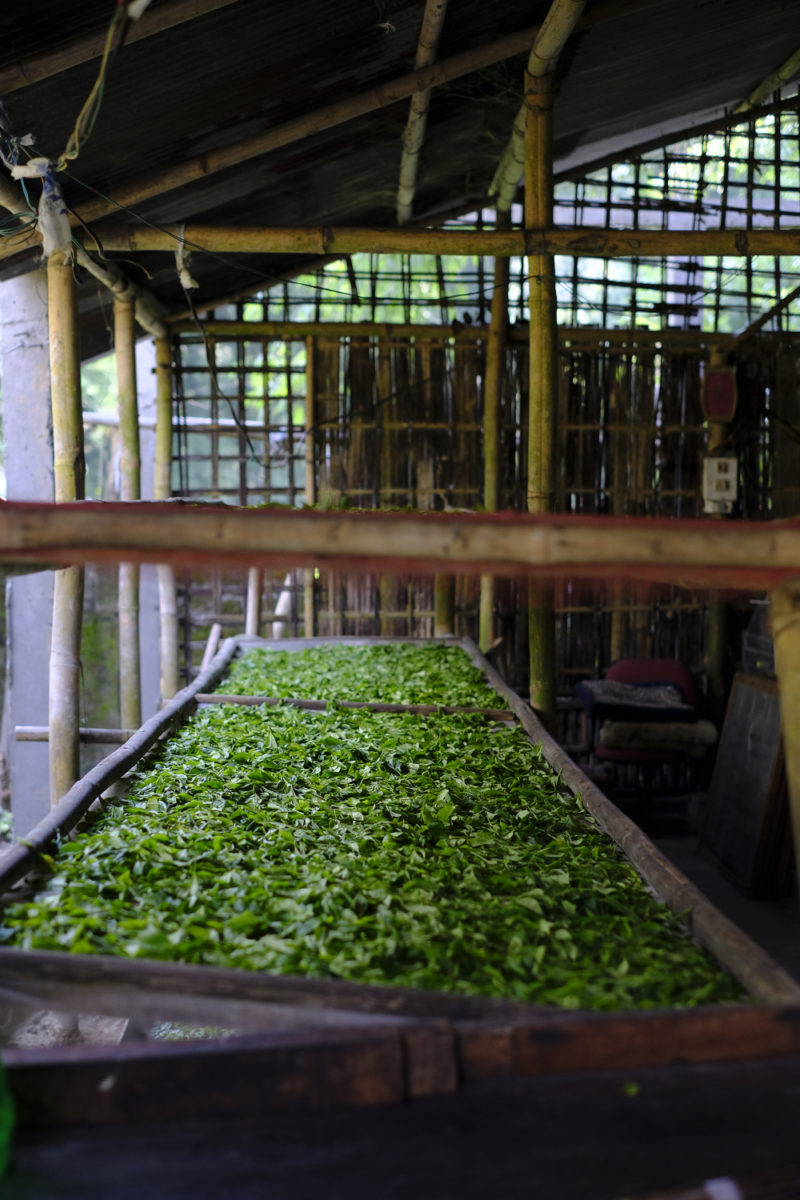
Subhasish Borah and Bidisha Das (who hail from Assam) were in a fancy restaurant in Ahmedabad, India discussing a disappointing $2.75 (INRs 200) cup of Assam black tea when the reason for founding Folklore Tea became apparent.
What started as a conversation about the qualities that make the teas of Assam so appealing has since developed into a collaboration with marginalized, small-size tea growers to provide natural loose-leaf “home grown” tea.
Subhasish, 30, and Bidisha, 29, decided to “step out” from the comfort of stable, full-time jobs (teaching urban planning, working in international relations respectively) and ‘set in’ by wholeheartedly embracing all aspects of tea: cultivating tea leaves, understanding the manufacturing processes, educating themselves to the science, and understanding the underlying terroir of Assam.
They began by educating themselves and then sharing with others traditional Assamese tea culture and traditions. This desire for knowledge is the foundation of their slogan: “Stepping out and setting in, a local tea movement is brewing.”
Emphasizing the local characteristics of Assam (instead of crafting tea to the expectations of export markets) shows respect for the land, customs, and artisanal craft. Folklore Tea works “alongside localities to initiate awareness about tea, who made the tea, the leaf of the tea, the cultural ethos, and the whole tea movement.”
In this interview, co-founder Subhasish Borah describe a holistic approach by contextualizing how Folklore Tea encourages mutual understanding cup by cup, unique creative pursuits (such as pairing poetry with tea), and the impact of lockdown.
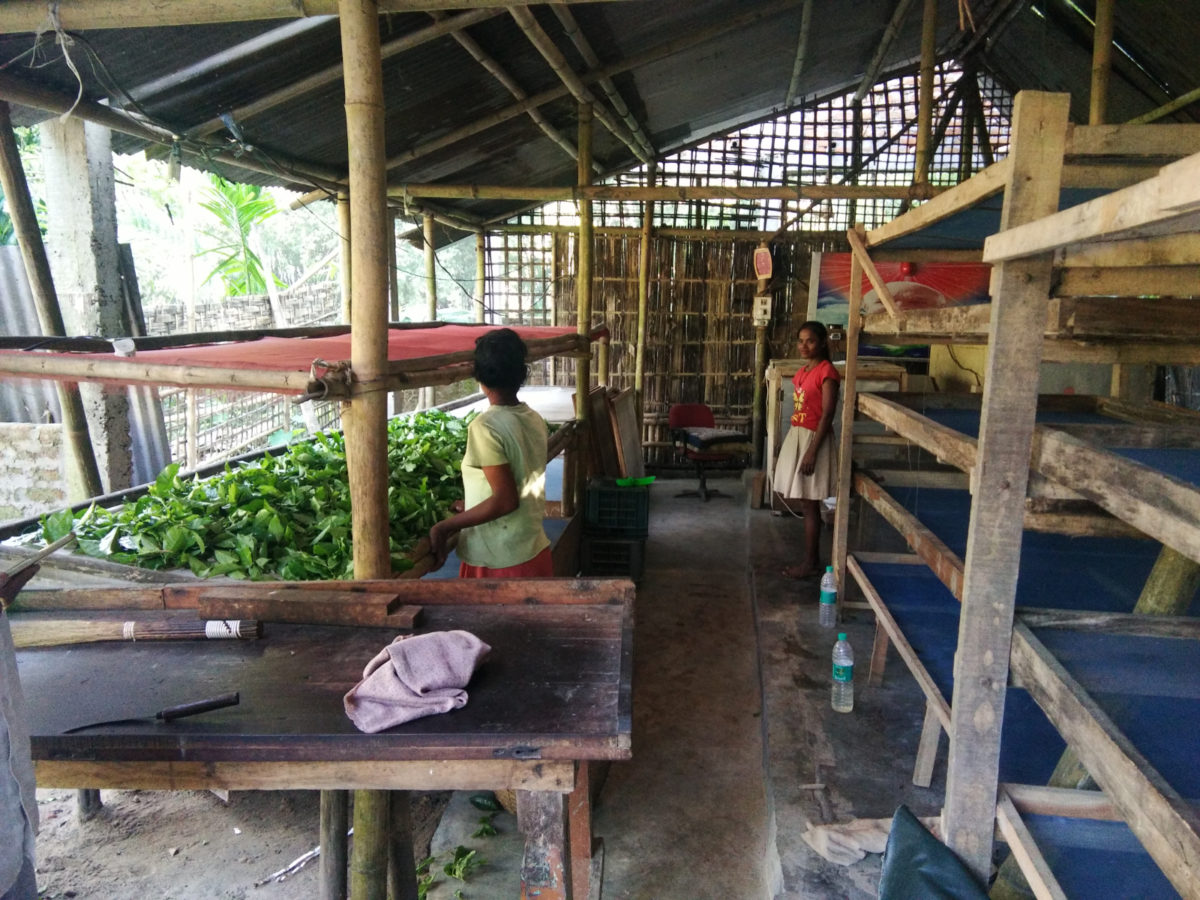
Anesce Dremen: How do you cultivate awareness about Assamese tea, culture, and traditions? How do you aspire to sustain these dialogues?
Subhasish Borah: When we talk about Assamese tea, it’s a relatively new topic when considering tea as a social and cultural practice. Since the 1960s Assam tea is best known for CTC [cut tear curl processed black tea] or the commercial-grade milk tea [chai]. As such, the tea culture has not evolved around Assamese societies. Assam has a rich tangible and intangible cultural heritage, but tea didn’t occupy significant space. Tea as culture didn’t penetrate the communities in Assam as it always remained inside the estates. Access was limited for a long time, and the only bridge between tea and people were the estates — which didn’t keep the bridge open. Though tea cultivation and processing can be found in the entire state of Assam, people still have marginal awareness about tea because there’s a cultural gap. Assam has been producing orthodox and green teas for many decades, but people had no idea what green tea or wulong is. It’s because of the central media that people in Assam learned about green tea and its benefits. It’s absurd that information about tea has to be shared in this side of the country, but I’m still happy with this reverse relation as it’s helping to bring awareness about tea.
We often have dialogues by talking about tea, people, and culture through our awareness campaigns. We are working on a bi-weekly zine to create awareness about tea and the everyday life of a tea grower and worker. Furthermore, we also hold exhibitions to display teas and its rich history in various parts of the country.
Anesce: Will you tell us how you have honored the gardeners and promoted sustainable practices to ensure that “none [are] passive recipients but dynamic actors constantly engaging in the tea value chain”?
Subhasish: Currently, the growers with whom we work and their approach towards tea are very natural, sustainable. There are growers, the gardeners who keep the gardens clean, and their families. Everything is a very close-knit group, and everyone has a particular role. It’s not a situation that a head worker is in the tea business, and his wife and kids aren’t involved. No. Entire families are involved in the entire processing. Though quite small in size, we work with growers who are working with small size gardens. We know everyone by name, and they are all close relations. This isn’t a big enterprise with many players, where names aren’t known, and the control goes out of hand because the agenda becomes mass production, not quality production. At Folklore Tea, all players are equally responsible for all the steps. We believe this is key to our philosophy: to bring everyone together.
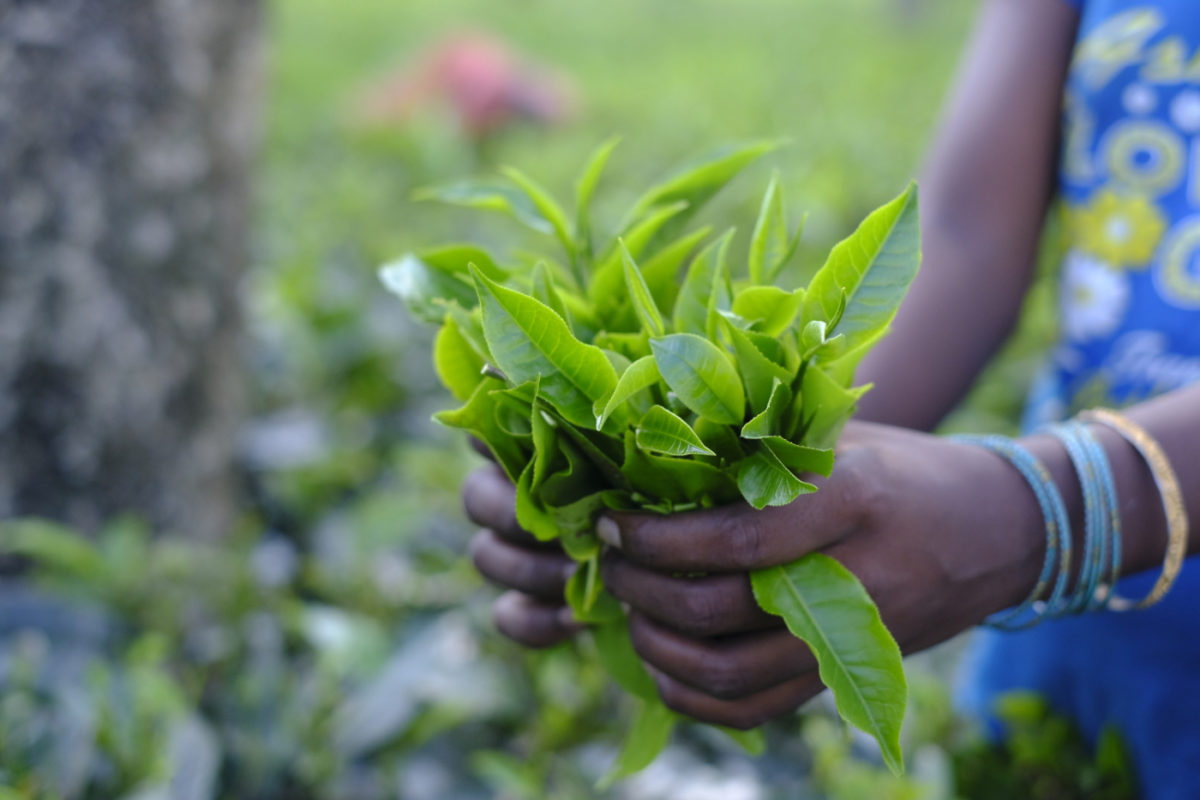
Anesce: Tea enthusiasts are drawn to Folklore’s high-quality tea leaves as well as commitment to narratives that uphold local culture and sustainability. Will you tell us about your decision to forego organic certification, refuse any mechanical processes, and utilize eco-friendly packaging? Why does this matter, and how does it impact the final product?
Subhasish: The organic tea movement in Assam started several decades ago but the production of Naharkatia organic-made tea has manifested one or two decades previously. People realized the market demand for organic products are increasing, so people started shifting from inorganic to organic. It takes at least three years to certify and often five years before you can no longer find foreign particles in the tea or soil. Some of the growers working with us have converted to organic gardens, and some have started organic and natural gardens.
Our primary agenda is to keep it natural — how it used to be, as in you plant any sapling, and it grows on its own. We intend to do the same, and the tea trees are growing without any human intervention. So it becomes naturally organic, and the growers are not even using organic manure pesticide, so we claim it as “natural.” The process behind getting organic certification is tough, and it needs a lot of money. And four or five of our smallholders don’t have enough resources to afford that certification. So we call it natural teas and the natural process.

One of the good things about sustainability and not using inorganic products is that through our tea cultivation practice, we are not inducing any foreign particles in the soil, and it helps mitigate soil pollution if there is any. We keep other trees, such as fruit trees, in-between the gardens so that the root mechanisms in the ground intertwine. We believe this intertwined root mechanism helps in obtaining an aromatic brew.
About the packaging: we wanted to keep it minimal (either minimal or not use single-use plastic) and eco-friendly, so that’s why we thought of paper packages coated with aluminum foil. It’s hard to find paper solutions in India because it’s mostly plastic — which is a cheap option — so we struggled to find the right fit. The pouches we use are Oxo-degradable pouches.
Anesce: Why did you decide to include poems as pairings with tea?
Subhasish: We decided to describe the story of tea through poetry. It’s short and crisp.
It started with one single poem for all packages, but we thought we could generate different poems while discussing and ideating. For example, Trouvaille — the poem for black tea — means ‘lovely or was discovered by chance.’ There are different tea folklores in China, India, and Japan where a monk or a king accidentally found the tea plant, boiled the leaves and found tea. Similarly, our poetry is something discovered by pure chance.
Anesce: Please tell us about a special tea with Folklore Tea and a fond memory you have with this tea.
Subhasish: We have two personal favorites, one is wulong, and we picked the word Meraki [meaning to incorporate one’s soul within their work]. Crafting wulong tea has a complicated process, and the tea masters have to constantly look and process it to maintain the withering time, oxidation level, roasting temperatures when fired with wood. We do wood fire roasting, not electric or gas roasting. The tea masters have to constantly be there to ensure that the tea is not over-roasted, etc. It needs a lot of attention, so that is something we really like when working with wulong and the poem with it is one of our personal favorites.
There’s also an experimental wulong named Petrichor. Though it’s a wulong that would fall under the Meraki poem, we have a new name for it as well as a separate poem to represent its identity as a dark wulong. It launched in November 2020 and is a naturally scented wulong. Generally, in India, the natural scenting process is not done. The natural scenting process is like Chinese jasmine tea [the scented teas wherein jasmine flowers are integral to the manufacturing process and not the post-production blends]. So we worked with the natural scenting process, not using jasmine but instead used indigenous flowers to Assam, xewali.
Xewali can be used in offering prayers, served during meals, can be made into figures, or eaten as a snack, eaten during meals, and so on. This flower is very dear to all Assamese people; almost everyone will have a tree of this flower in their yard. This tea is one of my most personal favorites in terms of processing and ideation.
Xewali is a tiny flower white in color; its aroma is quite soothing. This flower is generally found in the Himalayan belt from Nepal, Sikkim, Assam, into West Bengal and Bangladesh; it’s only found indigenous here. The use of the flower in terms of cultural use and value is quite strong in Assam because it’s there in every step — prayer, eating, and drinking. This flower can be used everywhere and is also used in garlands to welcome people coming to your house.
Anesce: Folklore Tea sells hand-crafted teaware and tea cloths. Would you tell us about how that process began and what you hope your customers will take away from the artisanal experience?
Subhasish: Since my college days, I had this fascination with ceramics but never got the right opportunity to work. Later, one of our friends, Pranav, helped with our ceramic wares in his studio.
Traditionally in China, ceramics are used with tea. In contrast, bell metalware is used in Assam, not ceramics. Ceramic traditionally is mostly used for curds and those pots are hand-made, tapped ceramic which are entirely made by hand without using the wheel. Ceramics are a newer introduction; historically, only the bell metalware is used to drink tea here.
I recently built a small pottery workshop in Assam with Kohuwa Collective where people can try their hand at pottery. Lots of people here already work with ceramics which are unglazed earthenware pots to keep curd. We wanted to teach and learn together as well as build some financial benefits for the growers’ families, so they can make teaware and additional profits. We hope to build a concept of merging tea and ceramic teawares here in Assam.
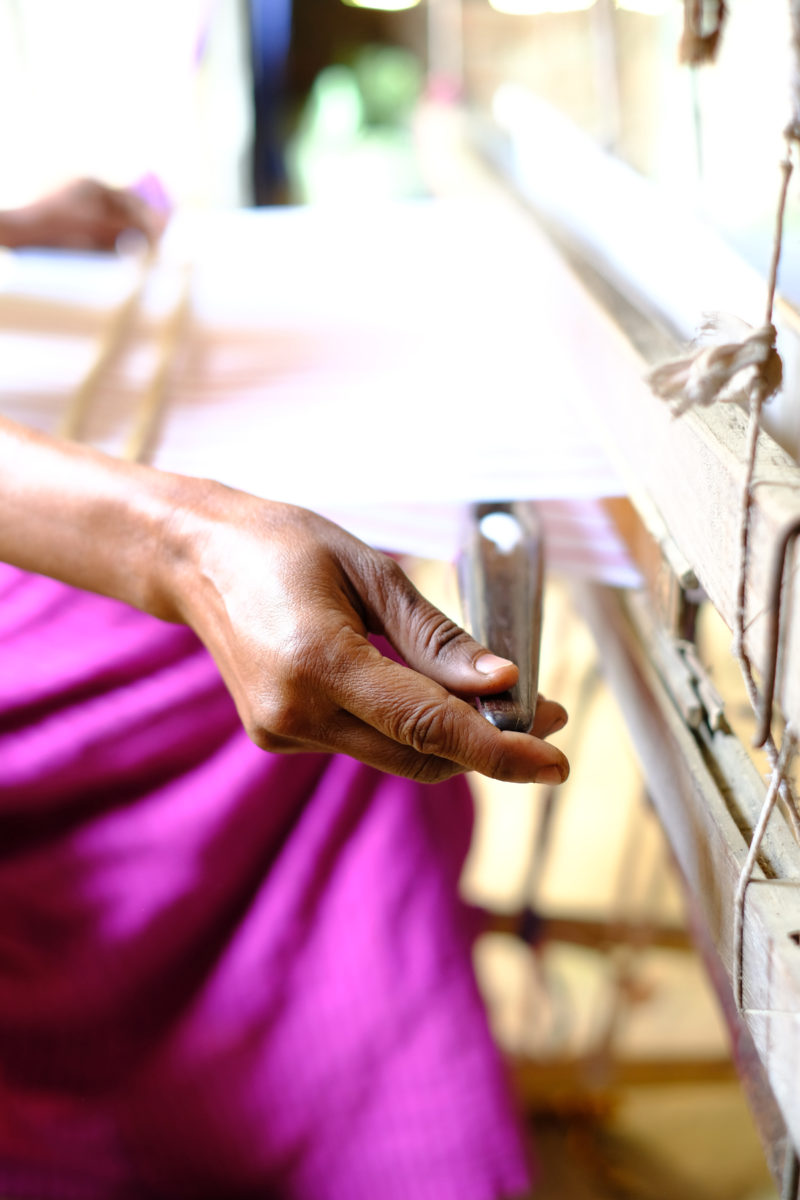
People in Assam are fond of weaving; almost everyone in villages weaves their own fabric. There is a kind of a stool known as gamusha, which is a traditional fabric in Assam. Assam has a long history of weaving, and many of our tea grower’s families are engaged in weaving. We provide cotton threads and financial help to the women for making tea towels which we sell in our online store. When any customer buys our tea and tea towels, they add extra income to the grower’s family, and anything extra always brings a smile and hope to our people.
We are trying to document a small booklet on how the tea ceremony is conducted in Assam and why the tea ceremony culture is not practiced anymore in the modern lifestyle. It’s not a complete, independent ceremony like the Chinese or Japanese tea ceremony, but here, the tea ceremony is much more related to community gatherings and the gatherings in the prayer halls called Naamghar. Ghar is house and naam are the prayers written in the holy book of Assamese culture written by Shri Shri Shankar Dev, the man who started the neo-vaishnavite movement across the country. There’s a book written by an Assamese philosopher and that prayer hall is where people gather, read that book, and pray; the tea ceremony is inside those tea halls.
Before starting the prayer and when ending the prayer, the tea was very specific from how it’s served, the utensils served, and how banana leaves are placed. There is a table runner in Chinese and Japanese tea ceremonies [茶席] and in Assam, that cloth is replaced with a banana leaf. This is an age old culture. So we are trying to document this and bring awareness and show people that tea ceremony exists in Assam that is less documented and known. Along with weaving and ceremonies, this is part of the project that will help growers get more money to add to the stability of their finances.
Anesce: In a world that prioritizes marketing and capitalism (and especially as consumers), we can easily fall victim (and perpetrator) to insidious ethnic tourism or environmental tourism that has detrimental impacts locally. Folklore Tea is committed to transparency which includes the option to visit the farms. How do such visits ensure mutual respect between two parties regarding maintaining the ecosphere while also valuing cultural traditions?
Subhasish: First, mutual respect is very important or else we cannot say it’s sustainable. ‘Sustainable’ is a big, broad term that is hard to define. Mutual respect is when people approach us to visit first learn about the region; we give them the entire agenda — it’s not where you relax in the room with room service and look out to see beautiful tea gardens. No. Everything needs to be done by visitors in our agenda so you can experience the things right as they are there. The place has its own rules set by the local village people. The one basic thing is to respect rules, customs, and local traditions. When we accept what is there, we respect it.
In many places, tourists come, litter all over the place, don’t respect locals, and it’s where you see capitalism in tourism — which is what we are trying to avoid. Instead, we do a couple of workshops revolving around tea, people, place and culture. With this kind of workshop, we build mutual respect between tourists and localities. Unless the tourist knows about people and the associated culture, how can they respect them? So before anyone comes to visit, we provide them with information about the people, the ethnicity, local beliefs, etc, so they have intuitive knowledge of where they’re going and what to expect out of the place and people.
The location is very simple. It’s an ecological stay where one can stay inside a growers’ house, stay in a cottage nearby, and have rooms in a Buddhist monastery. The monastery is very natural and a very calm place.
Anesce: On the website it says when visiting one may experience ‘ethnic dishes local to the region.’ Will you tell us about the people who live in the region and how the locals benefit from the tea garden visit exchange?
Subhasish: During farm visits, we have a night where the visitors will be involved in cooking the community dinner, where they are exposed to different ingredients, cooking techniques, and cultural dialogues. If you’re new to a place, food is one of the first tangible cultures you’ll witness, and we want our guests to explore it mindfully. The idea of the community dinner is to make visitors aware of what people eat in this part of the country. As a cuisine, northeastern foods are almost non-existent in mainland India.
All the growers engaged with Folklore Tea are not solely dependent on the tea market alone. Alongside tea gardens, they also grow vegetable gardens for personal consumption and also for selling in the local market. When a person or group comes for a visit, they can pluck the existing homegrown vegetables which they want to eat. This helps in initiating a dialogue and an exchange which teaches us about different cultures from India and abroad.
The lunch and dinner is hosted by the grower, so everything is held, connected, and facilitated to bring people to the farmers. They benefit because it connects farmers to the outside world. And then when some people come, take photos or videos, and post it, it also helps the growers’ visibility, their name, and what they’re doing. It’s a very important exchange for the grower and the kids, as they learn a lot from the people who visit. All our gardens are in villages which are mostly Assamese people, so the common language is Assamese. Because of such exchanges, kids learn to speak Hindi and English very well though Hindi is not the language of communication in the region.
Impacts of COVID-19 and India’s Lockdown on Small Tea Gardens
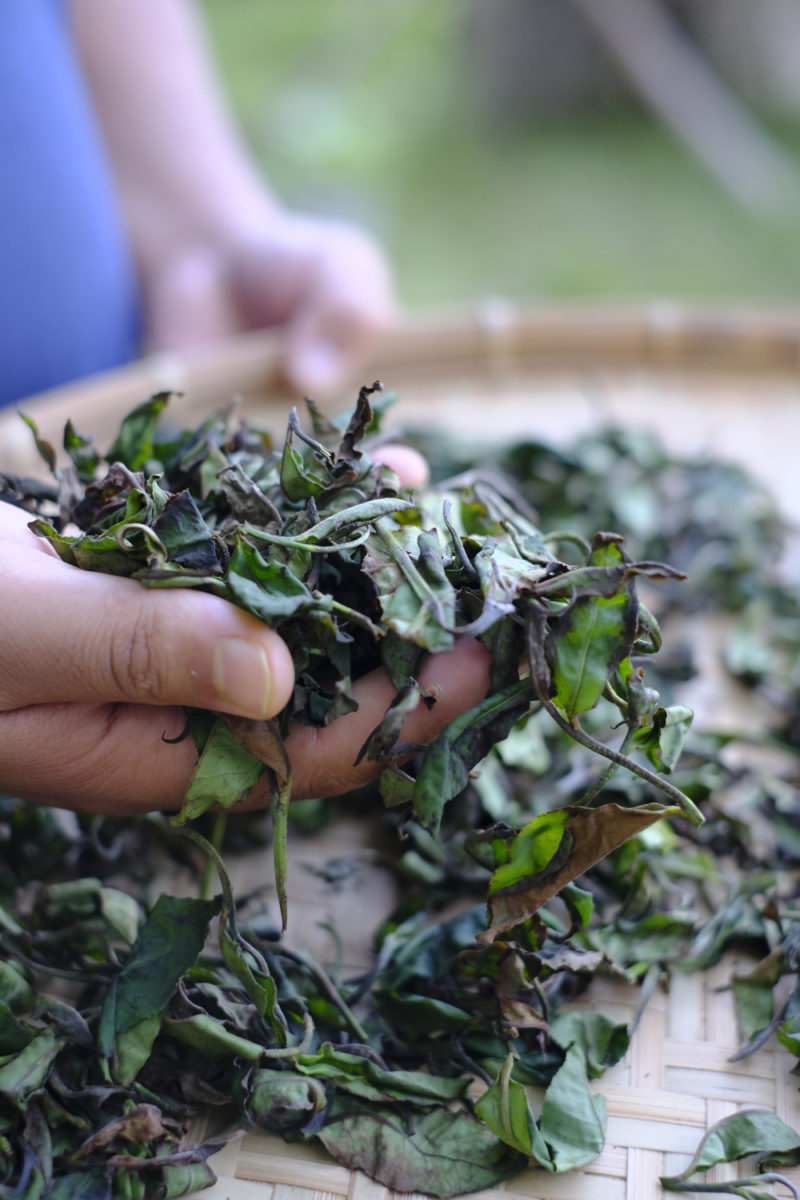
Well before the outbreak of COVID-19, Folklore Tea was dedicated to sustainability and bridging the gap between consumers and producers. What inspired co-founder Bidisha to learn more about the Assamese tea culture was the realization that “the high-grade teas never reached the houses of the salaried or middle-class Assamese owing to our ignorance in the entire process.”
On the website, co-founder Subhasish reveals, “Had I [counted the tea gardens] as a child and asked and tried to know more about it, I would have been more educated in tea.”
Anesce: As both of you developed a passion for tea later on in life outside Assam, what was the process of educating yourself about Assamese tea like? How do you continue to engage yourself to learn more each year?
Subhasish: We got our first exposure to Assamese tea in 2017, when my brother Debasish was making a documentary film on small tea growers of Assam. During the filming and documenting period, we met many growers of the region. Bidisha and I started talking with some of the smallholders and we personally knew a couple of them even before we started to work on tea. We knew them as our friends but never connected with them as growers or artisans. We knew they were making tea but never discussed anything particular in tea itself. Then we started discussing it more and more and more.
We read research papers from different regions (mostly from China, Japan, Assam), so we started to know what exactly white, wulong, etc. teas are and various cultivars. We learned what changes will happen when using a black tea cultivar to make a white tea, using a green cultivar to make a wulong tea, and talking with the growers.
Most of the tea farms we’re working with are between thirty and forty years old. The growers got seeds and branches from the government centers and just planted them; they didn’t know which cultivar it was during that time of plantation. The growers themselves didn’t know what was going wrong with their tea unless they got to know about the right cultivars. So along with growers, we started our experiments with different tea cultivars.
We can proudly say our understanding of tea is because of these small tea growers. It’s not the journals or the people we’re reading it from (though this helped to learn a lot, especially research from the Tea Research Institute in Assam) but to know the real tea and the real challenges, the real science behind tea are the farmers. One of the things they’re stuck in is the process of technology, so to get desired results — such as the variation we get with wulong — those papers helped us to incorporate and process it together.
Anesce: Can you tell us about your dedication to raising awareness about small tea gardens?
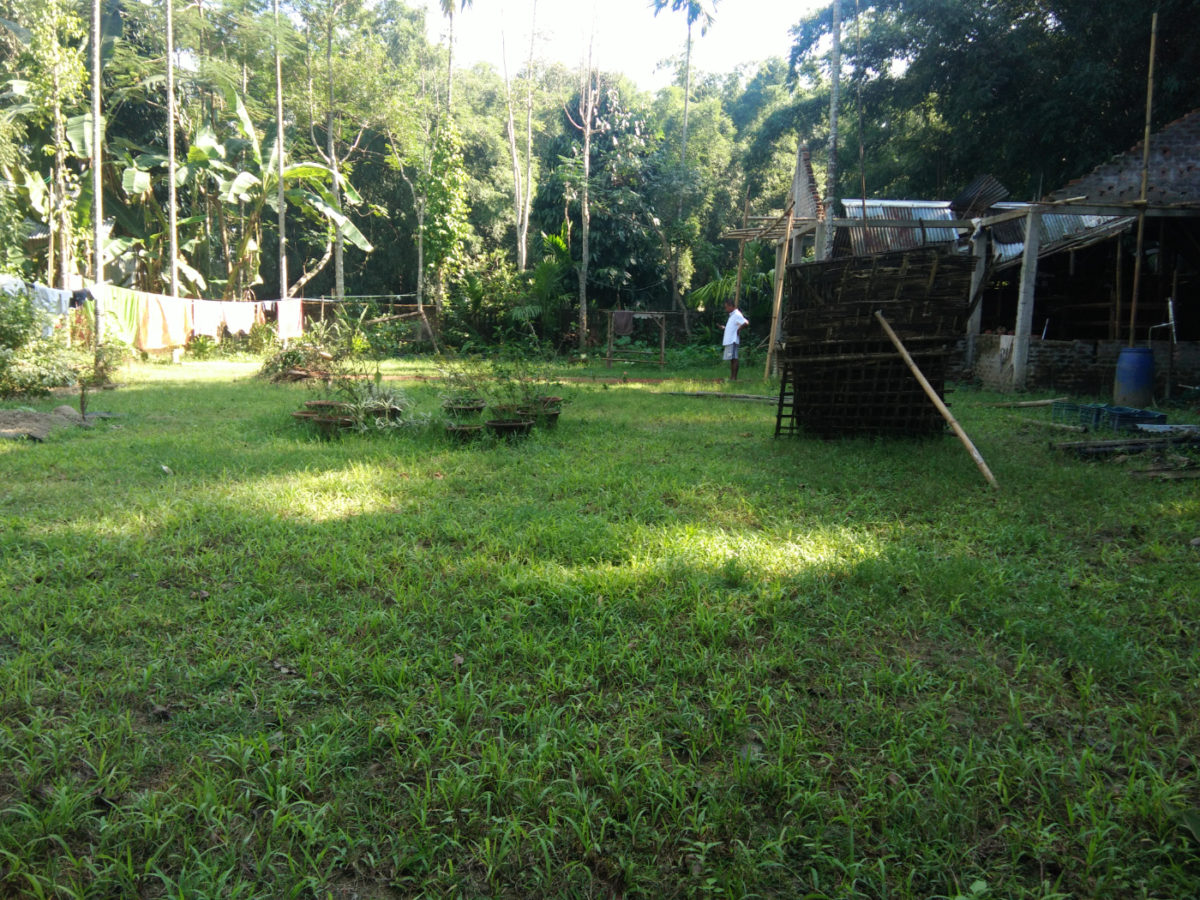
Subhasish: Transparency is very important to keep trust intact. I was raised in Assam, and my education was done in Arunachal Pradesh. Whenever I travel from Arunachal Pradesh to Assam, I see a lot of tea gardens in-between — the big estates. The highways are cutting the estates in-between, and I find it a very strong disconnection between what people know about tea and what actually happens.
When I try to compare big tea farms with the smallholders in terms of cultural integrity, it’s the smallholders who are actively playing the role of promoters in creating awareness about hand-crafted teas and bringing high quality teas even from the very tiny villages of Assam.
Also, there are a lot of Bought Leaf Factories operating in parts of Assam. They buy leaves from many small tea growers but never tried to connect socially and culturally with the growers. If they had respected the emotion behind tea, the products would have been very different.
They could be the bridge. They could have connected local people and big players, but that bridge was very loosely built and went to bigger estates instead of farmers. Now, it’s so big that building a bridge is not possible with our hands unless there are people who come forward and join this movement. Also in terms of the cultural and educational exchange between farmers and estates, it never happened. The legacy since the British rule and how ‘the people aren’t the business of tea’ was a huge disconnection with society. This has prevented the cultural evolution of tea in Assamese society.
Anesce: Where were you when lockdown began? What were your plans pre-lockdown, and how did the national response to COVID-19 impact or change your plans?
Subhasish: During February through March 10th, we were in Bikaner House in Delhi, displaying tea and creating awareness. It was very interesting for us because we had very fruitful conversations with the audience; we were there to tell our story and understand tea and learn from others.
We reached Ahmedabad on the 12th of March for another event, and then we were stuck in Ahmedabad for several months. And this is what affected the business. The first flush was entirely gone. We only managed to harvest some leaves before the 20th of March. People were very scared about COVID-19, and there was panic. We started working on tea again by June 2020. Most of the growers had to trim the plants so that new leaves would come up in the second flush. It’s a huge loss, I’d say.
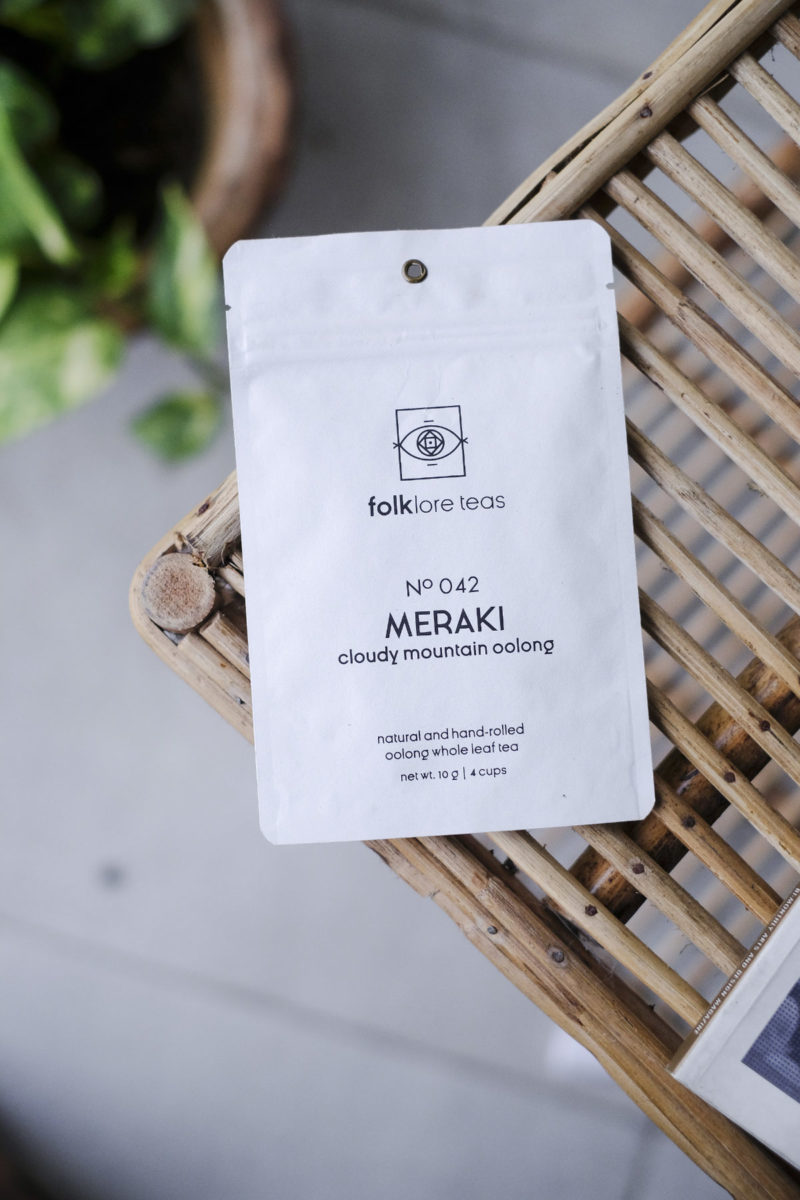
Anesce: Between lockdown beginning (March 23rd 2020) and commencement of Lockdown 4.0, to what extent were you able to place any domestic or international orders? How does this alter based on a typical first flush season? How did India’s lockdown impact your business?
Subhasish: For domestic orders, we had to stop our online ordering system. The logistics were not working properly and we didn’t want to deliver in that time because of safety reasons. We can release the parcels but anything may happen. We also lost many parcels which were placed just before the lockdown. Much of what was released from the warehouse between the 10-20th of March was never tracked, so it’s all lost. So we had to send customers the refunded amount and sent new packets in May.
We were able to send one international shipment in the month of May. The documentation for exports is really high now, as there’s a lot of processing that needs to be done. We need to verify that the tea doesn’t have any chemical content, no infectious diseases, etc. We had to send samples to testing labs to receive reports. A few international orders had to be canceled because of the constraints and delays in logistics. Due to COVID, the transport charges went up and we couldn’t afford it. It’s a loss for the growers as they didn’t have any other support during the lockdown. Our domestic operations started picking up from July 2020.
Anesce: What were the percentages of lost products for your tea gardens? Your website speaks about the close relationship you have with the ‘few hands’ and the families in Assam. How has this impacted them?
Subhasish: In terms of loss, it was really hard for the growers’ families and us. We lost the entire first flush, which would have had more than 500 kilograms of hand-processed tea. In spite of the loss, our growers were emotionally and mentally strong, and this was the biggest support for us. The export in May helped a little bit in terms of the financial situation. It’s not comparable to the entire loss, but at least something is better than nothing. Then from mid-July, the business started again. It stabilized finances with growers; still, the ripple effect of COVID and the lockdown still exists.
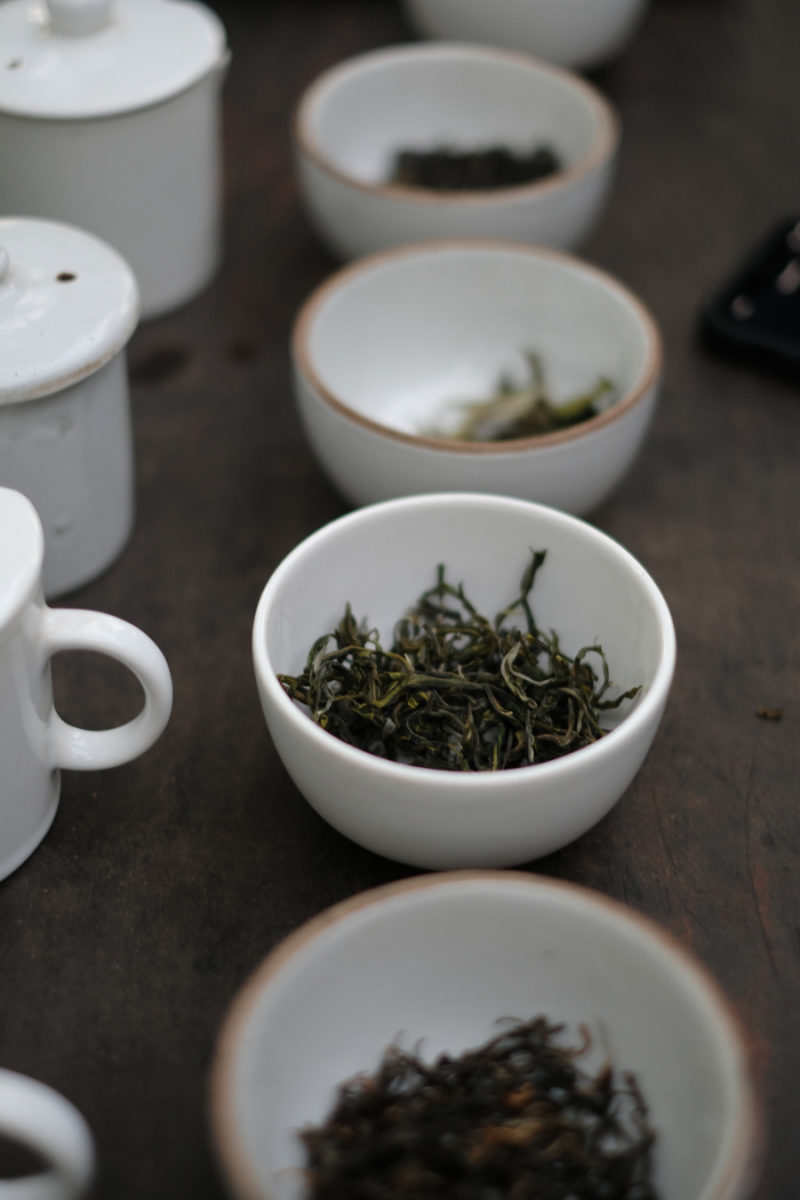
Anesce: What are your thoughts on tea being identified as an essential product? What does that say about Indian culture(s)?
Subhasish: Tea is, of course, an essential commodity. Indians can’t live without a cup of chai, so yes, it is an essential commodity. But, loose leaf teas might not be considered essential in the Indian subcontinent. Also, when craft is considered as a commodity of mass production, the question of quality, people, and culture doesn’t come, as the focus is on industrial-grade production.
There is a huge problem with saying “tea is an essential product.” We fought a lot, but it was not listed in the surplus we got. I don’t know how that phrase helped. Big and established tea companies managed to run their logistics, but we couldn’t get any logistic support to send our teas, though it was listed as an essential item.
Anesce: What has changed about your business due to COVID-19/lockdown that you foresee you will continue to do in the future?
Subhasish: To keep our community intact, this is very important for us — with or without COVID. We stick together as a small family of tea growers. The most important is to make the community grow emotionally, culturally, and financially.
In terms of business, hygiene and safety have changed, such as keeping the entire unit sanitized. Earlier, we used to clean the unit with water once the day was finished. Now, we sanitize the whole unit as we have a responsibility not only for our group members but also for all who show their trust when they buy our teas.
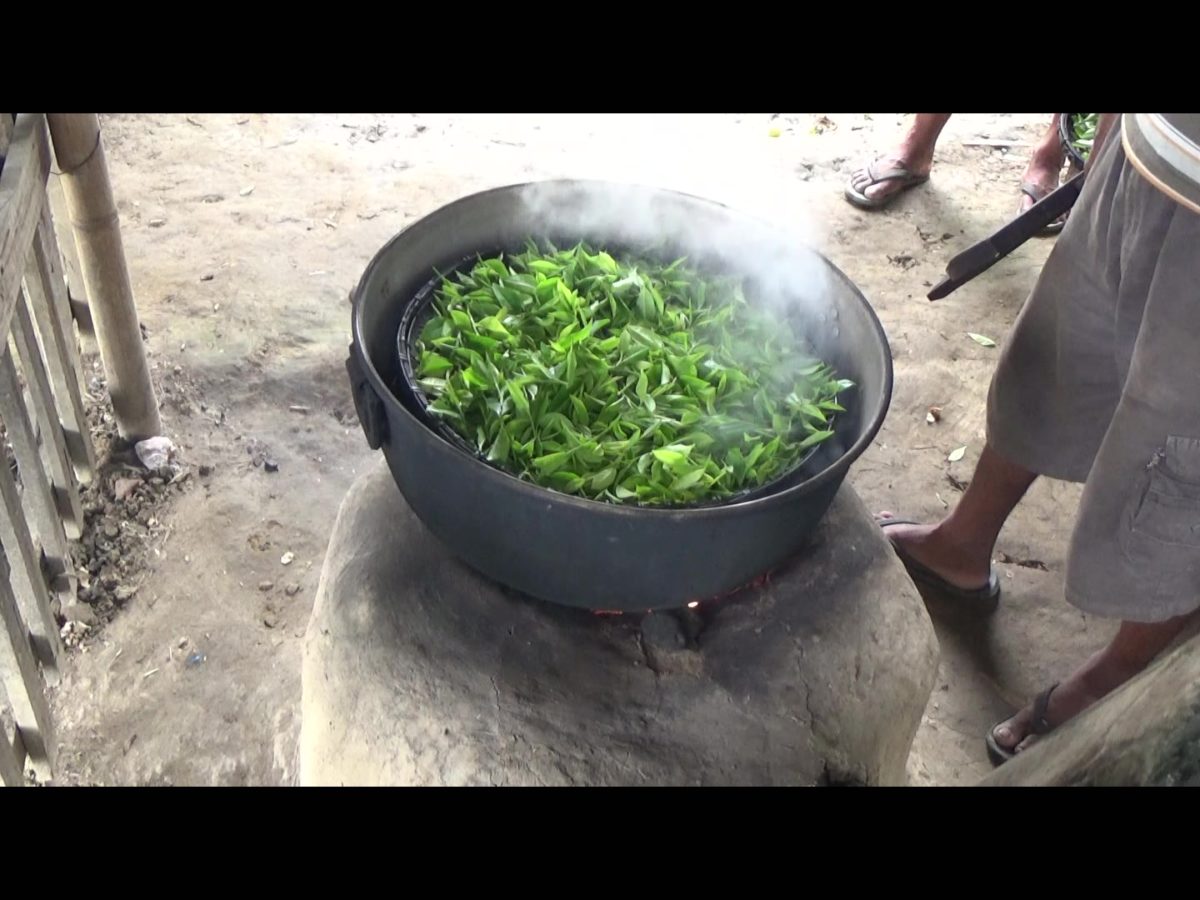
Anesce: What’s in your cup now?
Subhasish: There’s a lot of things in our cup right now: a lot of ideas alongside tea, fabrics, ceramics, and many more. Actually, our cups are spilling over now. The two immediate things are the naturally scented tea and the documentation of the Assamese tea culture. Plus, the everyday experimentation is going on. If the situation is favorable, we would like to start a small tea gallery where our growers can speak about their experiences once a week or invite people to listen to them like a human library. We’re working on photographic documentation of housing typologies, the everyday life of growers and workers, and the associated cultural landscape. That’s all in the cup right now.
